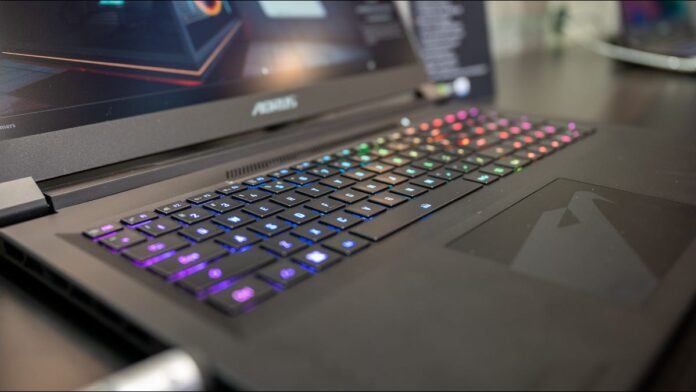[ad_1]
While you can often get noticeable extra performance from overclocking your gaming laptop, there are significant drawbacks, and only some models might make it worth trying to push their clocks beyond spec.
Keen gamers have been overclocking their desktop systems for a long time, but now that gaming laptops offer serious gaming performance, there’s interest in doing the same for mobile gaming PCs. However, is there any worthwhile margin in the world of laptops?
What is overclocking?
In case you’re not too familiar with the concept, overclocking is the practice of setting a processor’s clock frequency to a higher level than it was officially designed for. So how is that possible?
Computer components work in cycles, and the “clock speed” determines how many cycles the processor goes through in one second. The Intel 8086 CPU from which modern IBM compatible PCs are descended operated between 5Mhz and 10Mhz. That’s five to ten million cycles per second. Today, CPUs run at speeds of up to 6 Ghz or six billion cycles per second.
Other things being equal, the higher the clock rate of a processor, the faster it will run because it can do more work in a single second.
Why overclock a gaming laptop?
It might seem like a silly question, but gaming laptops have significant differences in their design considerations compared to desktops, so it’s fair to wonder why anyone would want to overclock one. Clearly the idea is to get more performance out of the computer, but aren’t gaming laptops pushing the limits of their power and cooling?
The answer is complicated and will differ between brands, models and individual laptops. Unless we’re talking about high-end laptops that push their CPUs and GPUs to their limits, there’s usually some headroom for the components themselves. They’re not running at their maximum possible performance because the laptop wasn’t designed to power them at those speeds or to remove the resulting heat.
This means there’s likely to be at least a little extra stable performance with many laptops, and free performance is always an attractive idea.
RELATED: How to Overclock Your Graphics Card for Better Gaming Performance
The risks of overclocking your gaming laptop
Overclocking your laptop carries the same general risks as overclocking a gaming desktop PC:
- Components may have a shorter lifespan.
- Permanent damage to components is a small possibility, especially if you increase voltages.
- Your system can become unpredictable and unstable.
One key factor that makes overclocking a gaming laptop particularly challenging is heat. Often the standard settings for laptop CPUs and GPUs allow the chip temperature to get much higher than it would on a desktop computer. The end result is that you don’t have much, if any, thermal headroom for overclocking.
This makes it more likely for components to suffer from heat-related problems or for your system to throttle or even shut down to protect itself from critical overheating.
The Drawbacks of Overclocking Your Gaming Laptop
While overclocking is technically easy these days, even if you find a worthwhile stable overclocking for your gaming laptop, there are still some downsides.
The most obvious are heat and noise. Your laptop’s cooling system will kick into full throttle to keep your GPU and CPU temperatures in check. Especially if you have overclocked both components. Many gaming laptops offer customizable fan curves, so you can try to optimize the noise level and heat for your specific system, but higher clock speeds mean more heat and it has to go somewhere.
The power consumption of your system will also increase. This isn’t really an issue when running on battery, as the CPU and GPU throttle dramatically when unplugged, but you’ll still be pushing more watts through your PSU and computer in general.
Since laptops run on tight power budgets, this can lead to instability or can lead to competition between different components for power, leading to uneven system performance.
That being said, your author has been using a 2022 MSI GS66 Stealth gaming laptop with a 200 MHz overclock on both the GPU and VRAM for months now, and it has performed perfectly. This underscores the fact that every laptop can be different when it comes to overclocking, even two identical drives.
Other ways to improve gaming laptop performance
It’s natural to want to get the most performance possible out of the gaming laptop you paid for, but there are alternatives to overclocking your laptop that can add a bit more oomph to your benchmark scores:
- If your laptop has a MUX switch, turn on dGPU (Dedicated GPU) mode.
- Use a cooling pad when gaming on a desktop to give your boost clocks more headroom.
- Make sure you have the latest GPU drivers, which often come with a few percentage points of performance improvement.
- Lower voltage your laptop so it runs cooler and reaches higher clocks automatically.
In many cases, these safe little tricks can give you a performance boost similar to a small overclock or even enable higher overclocks if you’re feeling particularly adventurous.
[ad_2]
